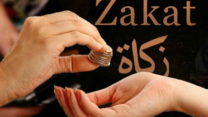Why a Thorough Trademark Search in the USA Is a Must Before You Build Your Brand
Launching a new brand is exciting there’s the thrill of designing your logo, choosing the perfect name, and dreaming about seeing your products on shelves or your website buzzing with orders. But before you invest time and money into marketing and packaging, there’s one critical step that could save you from serious legal trouble: conducting a trademark search.
Many entrepreneurs underestimate how essential a trademark search is, thinking it’s just another bureaucratic hurdle. In reality, it’s a powerful tool that protects your business from future disputes and ensures your brand truly stands out.
What Is a Trademark Search?
A trademark search is a detailed process of checking whether your desired brand name, logo, slogan, or other distinctive element is already in use or registered by someone else. In the USA, this typically involves searching the United States Patent and Trademark Office (USPTO) database and other relevant sources to identify existing trademarks that may conflict with yours.
But it doesn’t stop there. A thorough trademark search often includes looking for similar-sounding words, alternate spellings, and even foreign translations that could create confusion among consumers.
Why Is a Trademark Search So Important?
1. Avoid Legal Disputes
Imagine spending months (or even years) building brand awareness, only to receive a cease-and-desist letter claiming trademark infringement. This happens more often than many realize and it can force businesses to rebrand, lose customers, or face costly lawsuits.
2. Save Money and Time
Trademark disputes can be expensive. Beyond legal fees, you might need to redesign packaging, update your website, reprint marketing materials, and rebuild your reputation under a new name. A trademark search is a relatively low-cost step that can prevent those major losses.
3. Strengthen Your Trademark Application
The USPTO reviews new trademark applications to see if they conflict with existing marks. If your proposed trademark is too similar to an existing one, your application might be rejected. Conducting a search beforehand helps you choose a name or logo with a better chance of approval.
4. Build a Unique Brand Identity
Your brand should stand out, not blend in. A trademark search helps you find a truly distinctive name that sets your business apart in the crowded US market.
How to Conduct a Trademark Search in the USA
Step 1: Start with the USPTO’s TESS Database
The USPTO offers a free online tool called the Trademark Electronic Search System (TESS). You can look for registered trademarks and pending applications to see if your mark might conflict.
Step 2: Go Beyond Exact Matches
Don’t just search for your exact brand name. Consider similar spellings, phonetic equivalents, abbreviations, and translations. For example, if your proposed brand is “Kool Koffee,” check for “Cool Coffee,” “Cool Kafi,” or similar variations.
Step 3: Search Common Law Sources
Not every trademark is registered. Businesses can have rights based on actual use, even without federal registration. Search the internet, business directories, and social media to spot unregistered but actively used marks.
Step 4: Consider Professional Help
A trademark attorney or specialized search firm can conduct a comprehensive search that covers state databases, domain names, and international marks. This is especially valuable if your brand is central to your business or if you plan to expand outside the USA.
Final Thoughts
Skipping a trademark search is a risk no serious business owner should take. In the USA’s dynamic market, brand identity is everything and protecting it starts with making sure your name or logo doesn’t step on someone else’s rights.
Think of a trademark search as insurance: a small upfront effort that can save you countless headaches, legal troubles, and financial losses later. So before you print your business cards or launch your website, take the time to do it right and secure your brand’s future from the very beginning.





